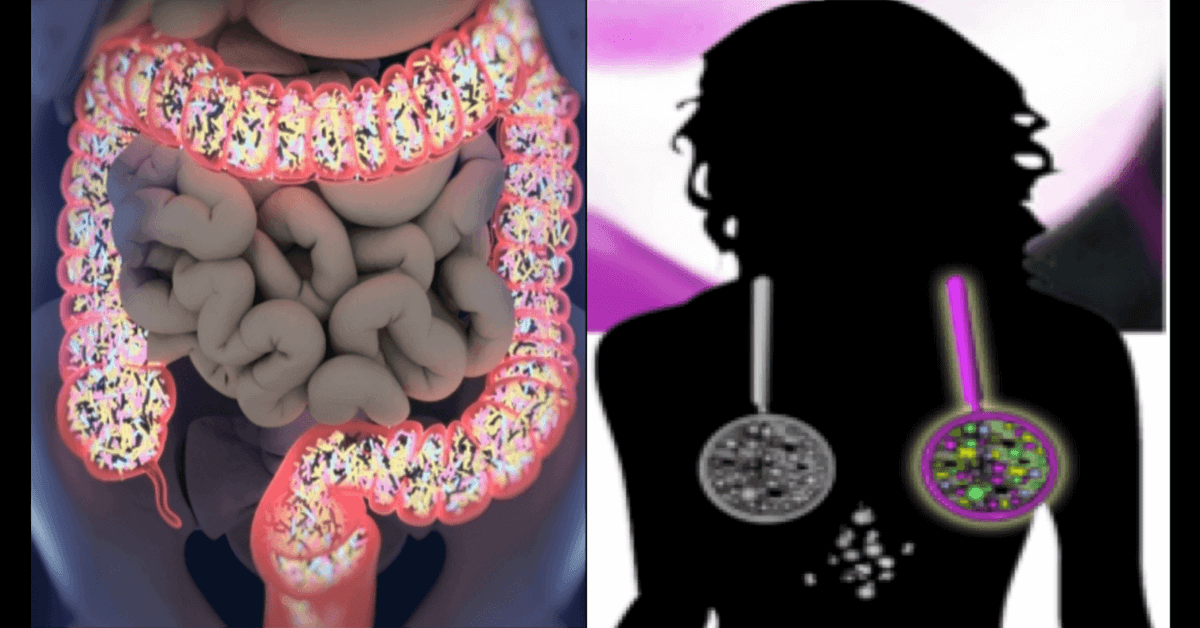Today’s show explores your microbiomes, difference between breast biomes that “live” in a breast with cancer versus healthy breast tissue, and even how pollution can attack these microbes. You will learn how to “test” and “caretake” your precious biomes.
You’ll also learn how Pollution Attacks Your Biomes and what you can do about it.
Inside the human body are nooks and crannies, called biomes, teeming with microbial life that includes viruses, bacteria and fungi. We have “biomes” throughout our entire body.
We have biomes in our eyes (the ocular biome), mouth (oral biome), in our esophagus, stomach, small intestine, colon (most commonly thought of as our microbiome), in our tonsils, vagina, respiratory tract and lungs, in the uterus, urethra, prostate, skin, and even inside our brain. There are biomes deep inside the chambers of your heart.
Your colon is your most biome dense organ. It’s the most studied so far. But in today’s radio show you learn about your many biomes, especially inside the breast!
Biomes give off peptide signaling molecules that allow biomes to cross-talk with each other and also with distant tissues like your brain. Biome signals and cross-talks are how biomes enormously influence our state of wellness or illness.
Biomes are so powerful they are now being referred to as our “third brain.”
- First brain—in your head
- Second brain—enteric nervous system inside your gut
- Third brain—sum total of microbial life inside all your biomes
We inherited healthy ancestral microbiomesfrom long ago. But with today’s lifestyle, including the Standard American Diet (SAD) and toxic exposures from the environment, these healthy protective microbes are getting “ill” and making us ill.
There are “disease signature dysbiotic” conditions. This means there are distinctive microbial fingerprints for various diseases. For example, patients with multiple sclerosis will have common dysbiotic microbial patterns. So will bulimic patients. So will breast cancer patients, inside their breast tissue! So do Crohn’s inflammatory bowel disease patients. So do post-bariatric surgery patients. And kidney stone formers. And even for Alzheimer, Parkinson, diabetes, and heart disease sufferers. The list goes on and continues to grow.
Diet is the most powerful driving force for the health of these biomes.
Hormone-altering chemicals from your personal care products, or from plastic containers you wash in the dishwasher and use for food, or from sitting in polluted traffic, can all adversely affect your precious biomes.
Cleveland Clinic researchers discovered that breast cancer patients have different breast biomes than breast tissue without disease. “Healthy” breast tissue, from women who didn’t have breast cancer, contains more of a healthy bacterial species called Methylobacterium. Women with breast cancer had much less, if any, Methylobacterium.
Different types of breast cancer have different symbiotic signatures. ER positive and Her2 positive shared a microbiotic signature, while triple negative and triple positive shared a similar microbial pattern.
A lactating breast has a microbiota based on what the mother eats, the bugs on her skin and her gut, and the pollutants she’s been exposed to throughout her life. In contrast to vaginally delivered infants, the gut microbiotaof infants delivered by C-section are significantly less similar to their mothers. Cessation of breast-feeding, rather than introduction of solid food, is what turns a baby’s microbiome into an adult-like microbiota. At three years old, a child’s microbiome starts to look like an adult.
How a baby is delivered initiates the health of their microbiota (the sum of all their biomes). A new born moving through a healthy vaginal biome gets a healthy start. Obese junk-food eating moms will have less healthy vaginal biomes and babies will get a less healthy start. Breastmilk’s microbiota takes it from there, and continues to influence the health of the newborn’s microbiota.
Breast milk stimulates healthy organisms in the infant’s gut like Bifidobacteria, Lactobacillus, and Bacteroides. Short-chain fatty acids in breastmilk activate receptors on T-reg cells and specific genes, so the baby won’t have leaky gut or gut inflammation. Other components of breastmilk (defensins, lactoferrin, etc.) inhibit pathogens and further contribute to microbiota composition. Healthy breastmilk and the vaginal microbiome stimulate baby’s intestinal microbiota to prevent asthma, inflammatory bowel disease, type 1 diabetes and even illnesses when the baby grows up.
The World Health Organization published that polluted air, with excess particulate toxins, is a major contributor to diverse diseases from diabetes to cancer to dementia. Hold on to your hats, air pollution is also being linked to “biome damage.” You’ll hear more about all this on today’s power packed show.
Guest Resources & Links
We would be so appreciative if you would share the podcast on your social media channels.
Please Review Us on ITunes!
If you’ve enjoyed the show, please take a minute to review the Best Health Radio Podcast in Itunes. Your reviews are so appreciated and they help others discover the podcast. Itunes doesn’t make it obvious, so here is the secret handshake to writing a review there…..
1. Click here to access the iTunes page
2. Click the Blue View in iTunes button.
3. Click Ratings and Reviews tab to the right of my picture, after Details.
4. Then click the white “Write a review” button, under the Customer Reviews section.
Thank you so much for your support!

